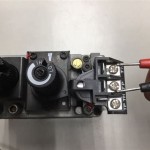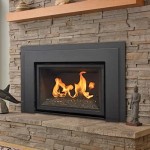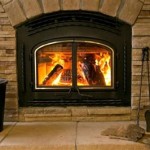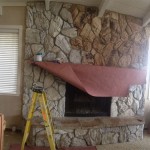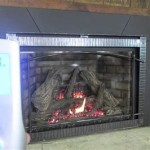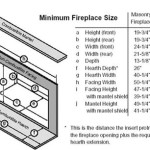Floating Fireplace Mantel Hardware: A Comprehensive Guide
The allure of a floating fireplace mantel lies in its seamless blend of modern aesthetics and timeless warmth. This design creates a visually striking focal point in any room, giving the impression that the mantel is suspended effortlessly above the firebox. Achieving this seemingly weightless effect requires specialized hardware, precisely engineered to provide robust support while remaining discreetly hidden. Understanding the different types of floating fireplace mantel hardware, their installation considerations, and the load-bearing capabilities is crucial for a successful and safe installation.
Choosing the appropriate hardware is paramount to the longevity and safety of the floating mantel. The weight and dimensions of the mantel, the composition of the wall, and the desired projection from the wall all influence the selection process. Overestimating the required support is always preferable to underestimating it. This article provides a detailed exploration of floating fireplace mantel hardware, covering essential aspects for homeowners, contractors, and designers seeking to integrate this elegant feature into their projects.
Understanding Different Types of Floating Mantel Hardware
Several types of hardware are available for installing floating fireplace mantels, each with its own strengths and weaknesses. The selection depends largely on the mantel's material, weight, and the structural integrity of the wall. The most common types include steel brackets, hidden support rods, and specialized mounting plates.
Steel Brackets: These are typically constructed from heavy-gauge steel and designed to be concealed within the mantel itself. The brackets are securely fastened to the wall studs or concrete using lag bolts or concrete anchors. The mantel then slides onto the brackets, effectively hiding the support system. Steel brackets are generally suitable for heavier mantels, such as those made from solid wood or stone. The key advantage lies in their high load-bearing capacity and relatively straightforward installation process.
Hidden Support Rods: This system employs steel rods that are embedded into both the mantel and the wall. Holes are drilled into the back of the mantel and into the wall, and the rods are inserted and secured with epoxy or construction adhesive. This method provides a clean, minimalist look, as no visible brackets are present. However, it demands precise measurements and drilling to ensure proper alignment and structural integrity. This option is often preferred for mantels made of lighter materials like wood or engineered wood.
Mounting Plates: These consist of flat steel plates that are attached to the wall and the mantel. The plates are often recessed into the back of the mantel, creating a flush surface. Mounting plates offer a balance between ease of installation and load-bearing capacity. They are suitable for a wide range of mantel materials and weights, making them a versatile choice. Some mounting plates come with adjustable features, allowing for minor adjustments after installation to ensure a perfectly level mantel.
Installation Considerations for Floating Fireplace Mantels
The installation of a floating fireplace mantel is not a simple task and often requires a degree of carpentry skill. Proper planning and preparation are essential for a successful outcome. Accurate measurements, careful drilling, and secure fastening are all crucial steps in the process.
Wall Preparation: The wall behind the fireplace must be structurally sound and capable of supporting the weight of the mantel. If the wall is constructed of drywall over wood studs, it is essential to locate the studs and attach the hardware directly to them. If the wall is made of concrete or brick, appropriate concrete anchors must be used. Using a stud finder or probing the wall to locate the studs is critical. Ensure the wall surface is level and free of any obstructions before proceeding with the installation. Uneven surfaces can compromise the stability of the mantel.
Mantel Preparation: The back of the mantel needs to be prepared to accommodate the chosen hardware. This may involve creating recesses for brackets or drilling holes for support rods. Precision is key in this step, as any misalignments can affect the final appearance and structural integrity of the mantel. Use templates or jigs to ensure accurate drilling and placement of the hardware. The weight of the mantel should be evenly distributed across the support system to prevent stress points.
Hardware Installation: Follow the manufacturer's instructions carefully when installing the hardware. Use the appropriate fasteners for the wall material and ensure they are tightened securely. Double-check all measurements and alignments before permanently attaching the mantel. A level is an indispensable tool throughout the installation process. After the mantel is in place, inspect it thoroughly to ensure it is stable and secure.
Load-Bearing Capabilities and Safety Precautions
The most critical aspect of floating fireplace mantel installation is ensuring that the hardware can adequately support the weight of the mantel. Exceeding the load-bearing capacity of the hardware can lead to serious safety hazards, including the mantel collapsing. Always consult with a qualified professional if there are any doubts about the structural integrity of the installation.
Weight Calculation: Accurately calculating the weight of the mantel is the first step in determining the required load-bearing capacity. Consider the dimensions and material of the mantel to estimate its weight. It is always advisable to err on the side of caution and overestimate the weight slightly. Consult with the mantel manufacturer or a building materials supplier for accurate weight information.
Hardware Specifications: Review the manufacturer's specifications for the hardware to determine its maximum load-bearing capacity. Ensure that the hardware is rated to support at least the estimated weight of the mantel, with a safety margin for added stability. Pay attention to the type of wall material the hardware is designed for, as the load-bearing capacity can vary depending on the wall construction.
Safety Measures: Prioritize safety throughout the installation process. Wear appropriate safety gear, such as eye protection and gloves. Use power tools responsibly and follow all safety guidelines. If unsure about any aspect of the installation, seek professional assistance from a qualified contractor or carpenter. Regularly inspect the mantel and hardware for any signs of wear or damage. Address any issues promptly to prevent potential hazards.

Fireplace Mantel Wall Shelf Floating Rustic Beam Faux Distressed Mantels

Rustic Fireplace Mantel With Metal Brackets 5x6 6x6 6x8 Or Old West Iron

Floating Mantel Bracket Hardware Only

Federal Brace Fb 08037 48 Inch Width X 8 Depth Floating Fireplace Mantel Kit Arctic Groovz Cabinetparts Com

Unfinished Wood Floating Mantel Shelf Rustica

How To Install A Floating Mantle The Easy Way In Just One Afternoon

ᑕ❶ᑐ Level Up Your Diy Skills With A Floating Fireplace Mantel Magikflame

How To Install A Floating Mantle The Easy Way In Just One Afternoon

Barton 60 In W Floating Vintage Wood Fireplace Mantel Cap Wall Shelf Beam Easy Mount Ash 95156 The Home Depot

Indoor Mantels Rustica
Related Posts


